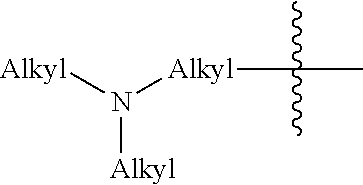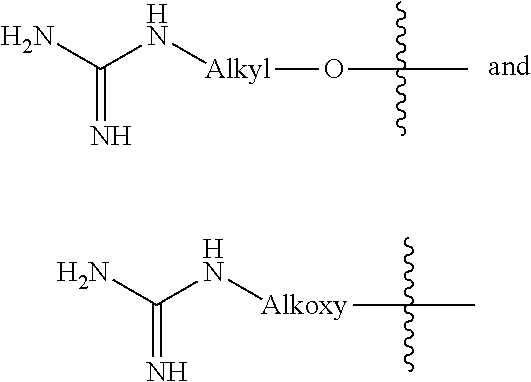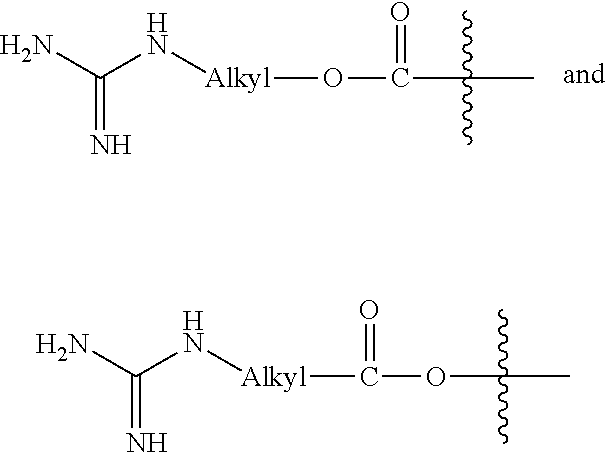Compositions and methods for forming stabilized compositions with reduced csa agglomeration
a technology of csa and composition, which is applied in the direction of mechanical vibration separation, emulsion delivery, medical preparations, etc., can solve the problems of reducing the effectiveness of csa-containing compositions in killing microorganisms, difficult to strike the correct balance between, and harmful to the mammal being treated, so as to reduce or minimize the toxicity of mammals, increase or maintain the effect of killing
- Summary
- Abstract
- Description
- Claims
- Application Information
AI Technical Summary
Benefits of technology
Problems solved by technology
Method used
Image
Examples
preparatory example 1
Preparation of 10% Pluronic F-127 Stock Solution
[0187]A stock aqueous solution of 10% Pluronic F-127 was made by slowly adding 10 mg of Pluronic F-127 over a period of 2-3 minutes to 90 ml of cold water (5-10° C.) in a 250 ml beaker while mixing with a magnetic stir bar. Thereafter, the mixture was permitted to form a gel, either by leaving the beaker it in a quiescent state at 4° for at least 12 hours or slowly mixed while cooling the beaker in an ice bath for about 4 hours. After mixing and warming to room temperature a gel formed. The stock solution was stored for later use at 20-23° C. in a capped container and protected from light.
[0188]Alternatively, a stock aqueous solution of 10% Pluronic F-127 was made by sprinkling 10 mg of Pluronic F-127 over a period of approximately 10 minutes to 90 ml of double distilled water in a beaker while mixing with a magnetic stir bar for at least 30 minutes. The stock solution was stored for later use at 20-23° C. in a capped container and pro...
preparatory example 2
Preparation of 20% Tween 20 Stock Solution w / v
[0189]A stock aqueous solution of 20% Tween 20 was made placing 20 g of Tween 20 into a glass beaker, adding 80 ml of double distilled water to the beaker containing the Tween 20, and mixing with a magnetic stirrer for 15 minutes. While continuing the mix the solution, approximately 20 ml of the solution was removed using a plastic syringe, filtered using a 0.22 μm filter, and stored in a capped container at room temperature.
preparatory example 3
Preparation of 2% hydroxyethyl cellulose Stock Solution
[0190]A stock aqueous solution of 2% hydroxyethyl cellulose (HEC, MW=90,000) was made placing 490 nml of double distilled water into a 600 ml glass beaker with a magnetic stir bar and, while stifling the water, sprinkling 10 g of hydroxyethyl into the beaker over a period of 5 minutes to prevent formation of chunks. The mixture was heated to 40° C. with continued stifling for 2 hours, yielding a solution that was not 100% clear. The mixture was then allowed to cool to room temperature with continued stirring, which took about 45 minutes. The 2% HEC solution and stir bar were transferred into a glass jar, which was capped and placed into a refrigerator at 4° C. overnight. Thereafter the stock solution was stirred for 15 minutes, following by sonication in a tub sonicator for 15 minutes. At least 20 ml of the 2% HEC solution was ultracentrifuged at 18,000×g for 1 hour at 10° C. The supernatant fluid was removed without disturbing ...
PUM
 Login to View More
Login to View More Abstract
Description
Claims
Application Information
 Login to View More
Login to View More - R&D
- Intellectual Property
- Life Sciences
- Materials
- Tech Scout
- Unparalleled Data Quality
- Higher Quality Content
- 60% Fewer Hallucinations
Browse by: Latest US Patents, China's latest patents, Technical Efficacy Thesaurus, Application Domain, Technology Topic, Popular Technical Reports.
© 2025 PatSnap. All rights reserved.Legal|Privacy policy|Modern Slavery Act Transparency Statement|Sitemap|About US| Contact US: help@patsnap.com



